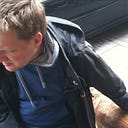The End of WDYT: How to End an Online Experiment
The lightning-fast pace of our hyper-connected world both facilitates and necessities the use of online experiments. We can gather sufficient data faster than ever before. That is a good thing because, in some cases, if it takes too long, things will change before we have time to understand our conclusions. In some cases, experiments are ongoing processes, but just starting one doesn’t indicate a desire to continue running it forever. So, it is essential to consider what we should do to bring an experiment to an end the right way.
Like most other projects of value, an online experiment wrap-up should include a post-mortem. Some of the best learnings can be gleaned by taking the time to thoroughly review the success or failure of the experiment against the predetermined goals. Understanding what went well and what didn’t can provide a better starting place for future experiments.
Don’t forget to finish up. As an experiment comes to an end, it is far too easy to leave loose ends. Take the time to finish all the related work and wrap up well. This will also help with another important step, releasing resources. If you haven’t been releasing data and information all along the way, share them as part of the wrap-up.
Archiving an experiment is rarely anyone’s favorite part and, by this point, you may be ready to move on. Still, you may never know how significant any portion of this work may be later down the road. Ensuring it is appropriately archived is not just good project management. It may make a big difference down the road.
There is one more step that far too many people and teams miss. Last but not least, celebrate. Whether the experiment was a phenomenal success, or the outcome had something to be desired, you made it to the end. Take the time to celebrate the achievement and get yourself ready for the next project on the horizon.
P.S. This is also the end of my WDYT Series, but not the end of my never ending desire to experiment. Stay tuned for more… later this year.
